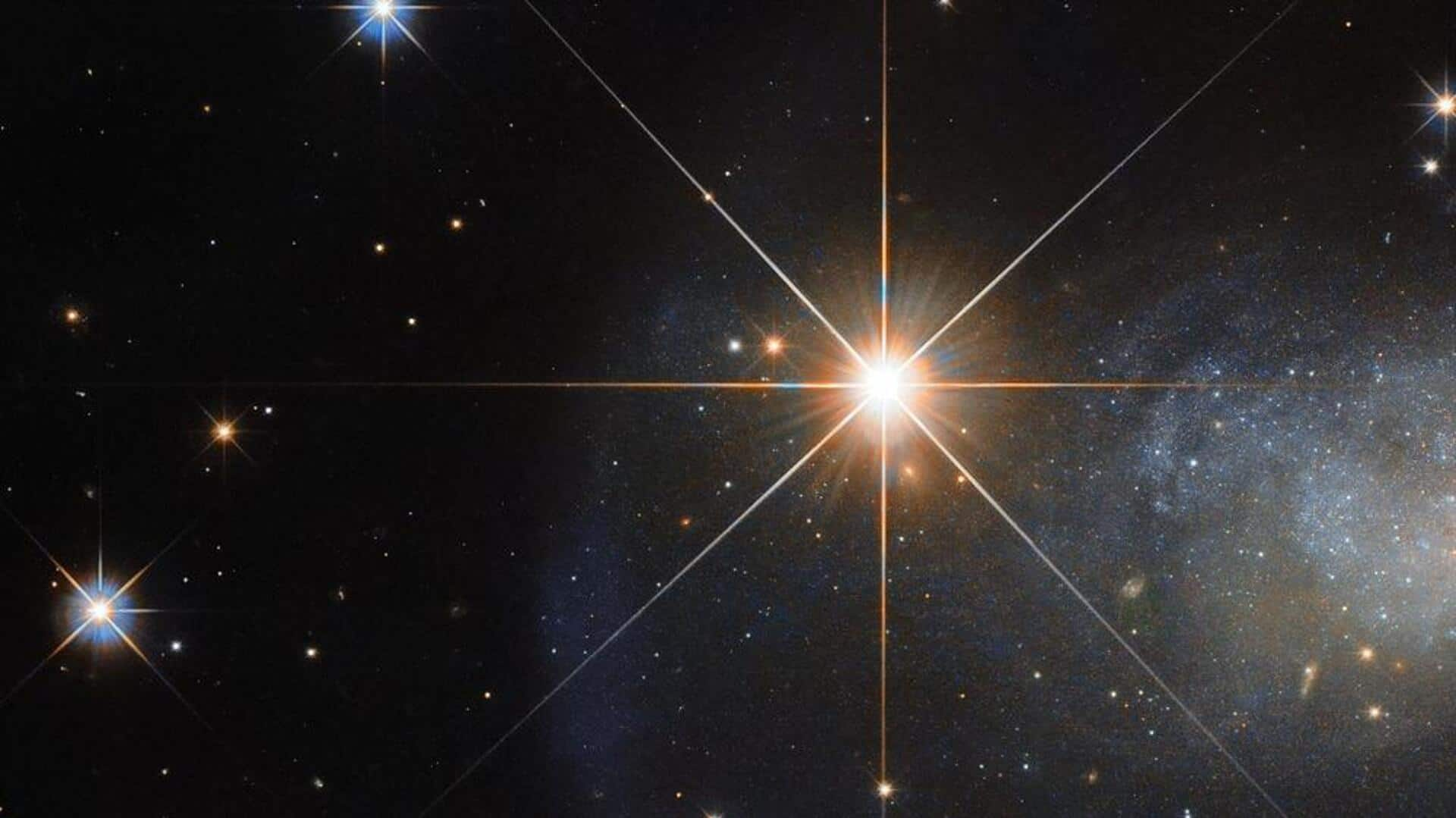
We finally know reason behind periodic dimming of star KOI-1755
What's the story
A team of researchers led by Ph.D. candidate Wang Haozhi has identified the real source of the periodic dimming of KOI-1755's transit signal using the Kepler space telescope. The study, published in The Astronomical Journal, was supervised by Professor Ali Esamdin at the Xinjiang Astronomical Observatory (XAO) under the Chinese Academy of Sciences (CAS). The discovery sheds light on a long-standing mystery surrounding this celestial phenomenon.
Signal origin
The mystery of KOI-1755's dimming
The periodic dimming of pulsating star KOI-1755 in Kepler photometric data has been a subject of intrigue for astronomers. However, the true source of this signal remained uncertain until now. The research team analyzed Kepler's Target Pixel Files (TPFs) and discovered that the signal actually comes from a background eclipsing binary star system located to the left of KOI-1755.
Research methods
Confirmed as eclipsing binary system
The team employed pixel-level photometric modeling, centroid-shift measurements, as well as cross-matching with Gaia DR3 data to reach their conclusion. They had successfully isolated the uncontaminated light curve of this background star directly from the TPF data through refined modeling and contamination removal. This confirmed it as an eclipsing binary system made up of two dwarf stars with an orbital period of about 6.14 days.
Methodology improvement
Proposed pixel-level modeling strategy
The proposed pixel-level modeling strategy in this study significantly improves the quality of light curves over existing batch-processing methods. By using Gaia DR3 parameters into the modeling process, it effectively avoids the systematic errors caused by unaccounted contamination from nearby bright stars. This results in a deviation of less than 3% between the system's mean flux and the theoretical value derived from Gaia DR3 parameters.
Stellar characteristics
Insights into binary dynamics
Further analysis of the binary system revealed periodic modulations caused by starspots and differential rotation, in addition to clear eclipses. The primary star's rotation frequency is about 13% lower than the orbital frequency, which is consistent with patterns observed in other short-period binaries. This discovery provides new insights into the complex dynamics of these celestial bodies.